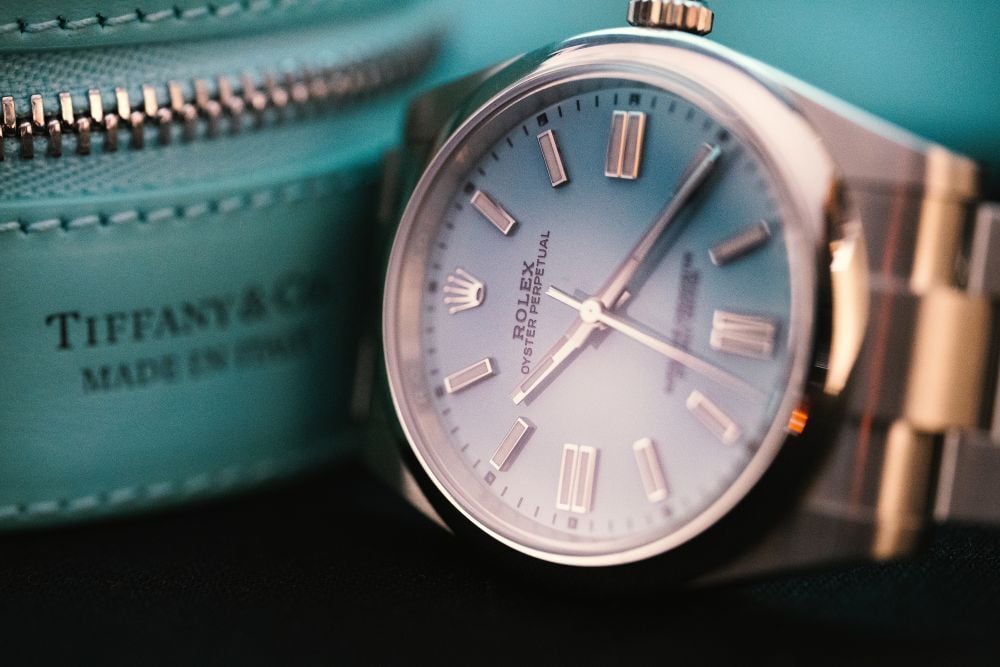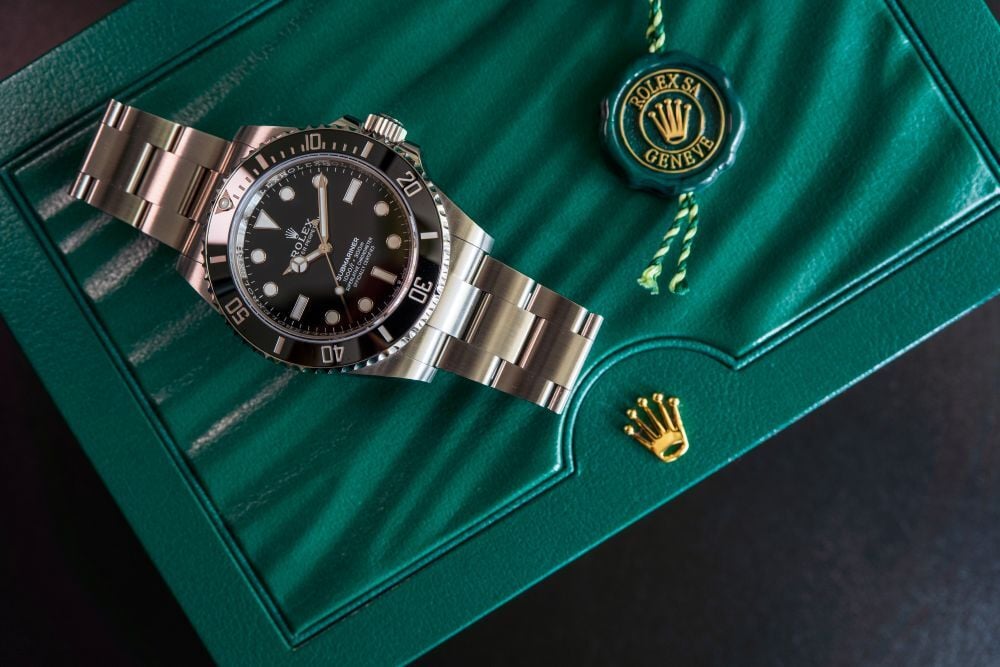5 Iconic Rolex Models and the Stories Behind Them
In the world of luxury watchmaking, no name is more widely recognised than Rolex. Where Patek Philippe speaks to generational legacy and Audemars Piguet to avant-garde engineering, Rolex holds a singular position – a cultural anchor with a watch for nearly every kind of collector. Some models are revered for their technical mastery or auction value, while others have taken on a broader cultural life, emblematic of entire eras – from the glamour of old-world Hollywood to the post-war optimism of the 1950s. Below, we explore five of the most significant Rolex watches ever made, their value today, and the histories they carry on the wrist.

Rolex Daytona
Few watches are as steeped in mythology as the Rolex Daytona. Introduced in 1963 for the American racing circuit, the Daytona was engineered for speed and precision, with a tachymeter bezel and three distinctive sub-dials. For much of the ’60s and ’70s, it remained a slow-selling tool watch with a small but loyal following – too technical for everyday wear, and too sporty to rival the elegance of a classic dress piece. That all changed with the reference 6239, later immortalised as the ‘Paul Newman’. Newman’s Daytona was a gift from his wife, Joanne Woodward, engraved on the caseback with the words “Drive Carefully – Me.” The actor wore it everywhere – on set, at the racetrack, and in everyday life – imbuing the watch with a lived-in sense of legend. When it went to auction in 2017, the piece brought $17.8 million, setting a world record and redefining the trajectory of the Daytona.
Today, the Daytona is a cornerstone of Rolex collecting. Waiting lists at authorised retailers are famously long, while vintage references – from the Paul Newman to the gold-and-black John Player Special – routinely command six-figure sums on the secondary market. It’s also one of the most expensive models in the current Rolex catalogue, with precious metal editions priced north of AED 500,000.
Read More: New Rolexes To Buy
Rolex Datejust and Lady-Datejust
Released in 1945 to mark Rolex’s 40th anniversary, the Datejust was the first wristwatch to introduce an automatically changing date window – an innovation that was groundbreaking at the time. It debuted on the newly designed five-link Jubilee bracelet and quickly became a symbol of the ending of wartime austerity, worn by figures like Winston Churchill, Dwight Eisenhower, and later Ronald Reagan. The version gifted to Churchill in 1947 by Rolex co-founder Hans Wilsdorf remains one of the most historically significant Rolex watches ever made: a solid gold piece engraved with the Prime Minister’s coat of arms.
The Datejust is one of the few Rolex models to offer true parity between men’s and women’s collections. The Lady-Datejust – released a few years after the Datejust in 1957 – brings the same internal architecture to a slimmer 28mm case. It remains one of the most accessible entry points into Rolex ownership, with prices starting from AED 29,000 in Oystersteel and rising to AED 210,950 in full Everose gold.
Read More: Rolex Datejust
Day-Date
Unveiled in 1956, the Rolex Day-Date went further and displayed both the day of the week and the date. Unlike the Datejust, it was released exclusively in precious metals and introduced the now-iconic President bracelet, created specifically for the model. The reputation of this Rolex was sealed by the company it kept: worn by numerous U.S. Presidents, including Lyndon B. Johnson and Richard Nixon, the Day-Date came to be known as the “President’s watch” – a moniker now embedded in Rolex lore.
The Day-Date also holds deep cultural significance in the Arab world. With Arabic date discs and bespoke regional editions, it has long resonated with Gulf royalty and dignitaries. In the 1970s, Rolex produced a number of custom Day-Dates bearing the UAE’s golden falcon emblem, commissioned under Sheikh Zayed bin Sultan Al Nahyan and presented as diplomatic gifts. One of the most historically significant examples recently auctioned by Sotheby’s is a pink gold Day-Date ref. 1803 that once belonged to Brigadier J.T. Paley – former British commander of the Abu Dhabi Defence Force. The watch was gifted to him by Sheikh Khalifa bin Zayed Al Nahyan (then Crown Prince) upon his relinquishment of command, and it features a stunning gilt dial inscribed with the Sheikh’s signature.
Today, the Day-Date remains one of the most symbolic Rolex models. Offered in 36mm and 40mm, it sits at the height of retail pricing – climbing to AED 584,500 for pavé diamond-set editions.
Read More: Most Expensive Rolexes Ever Sold
Rolex Submariner
Of all Rolex models, the Submariner may be the most universally recognised – a watch as at home beneath the sea as it is on the silver screen. Launched in 1953 as the brand’s first professional diving watch, it was engineered to perform at depth without compromising legibility, comfort, or durability. The Submariner introduced features now considered standard in dive watches: a unidirectional rotating bezel to track immersion time, luminous hour markers for low-light visibility, and an Oyster case rated to 100 metres of water resistance. It arrived just as recreational diving was entering pop culture – fuelled in part by Jacques Cousteau’s invention of the Aqua-Lung in 1943, and a growing post-war fascination with undersea exploration.
Its cultural breakthrough came in the 1960s, when Sean Connery wore the Submariner reference 6538 as James Bond in Dr. No, From Russia with Love, and Goldfinger. While the design has evolved considerably over the decades, its core DNA remains intact. Today’s models offer water resistance up to 300 metres and come in Oystersteel, two-tone, or solid gold, with or without a date window. Prices start from AED 37,800 for the classic no-date steel version, rising to AED 190,600 in white gold.
Read More: Rolex Submariner
Oyster Perpetual
Before the Submariner, before the Explorer, before the Daytona – there was the Oyster Perpetual. Its name brings together two of Rolex’s most important innovations: the Oyster case, introduced in 1926 as the world’s first waterproof wristwatch bezel, and the Perpetual rotor, Rolex’s self-winding movement mechanism, patented in 1931. Every modern Rolex in some way descends from this blueprint.
The Oyster has been tested in extremes – when British swimmer Mercedes Gleitze swam the English Channel in 1927, she did so with a Rolex Oyster tied around her neck. The watch survived the 10-hour swim in perfect working condition, and Rolex quickly ran a full-page advertisement in the Daily Mail, cementing its place in the public imagination as a technical and cultural milestone. Decades later, the Oyster Perpetual was supplied to the 1953 British Everest expedition for field testing – the same expedition during which Sir Edmund Hillary and Sherpa Tenzing Norgay became the first climbers to reach the summit. It performed exceedingly well and paved the way for what would become the Rolex Explorer.
Today’s Oyster Perpetual stays true to its original formula: a clean dial, no complications, and a focus on balance and precision. It’s available from 28mm up to 41mm and comes in a wide range of colours – from inky black to candy pink. Retail prices start from AED 23,050.



